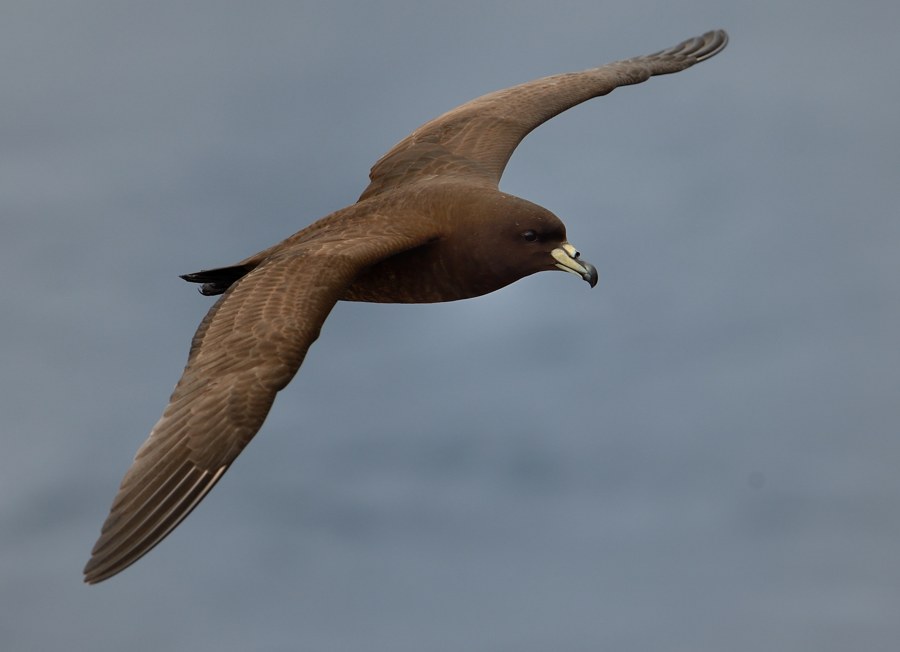 The ACAP-listed Black Petrel - a species included in the study linking seabird groundings to light pollution; photograph by Kirk Zufelt
The ACAP-listed Black Petrel - a species included in the study linking seabird groundings to light pollution; photograph by Kirk Zufelt
Ariel-Micaiah Heswall (School of Biological Sciences, University of Auckland, Auckland, New Zealand) and colleagues have published open access in the journal PeerJ on the link between light pollution and seabird groundings for seabird species, including the ACAP-listed Black Petrel.
The paper’s abstract follows:
“Artificial light at night (ALAN) is a growing conservation concern for seabirds, which can become disoriented and grounded by lights from buildings, bridges and boats. Many fledgling seabirds, especially Procellariiformes such as petrels and shearwaters, are susceptible to light pollution. The Hauraki Gulf, a seabird hotspot located near Tāmaki Makaurau/Auckland, Aotearoa—New Zealand’s largest urban city, with a considerable amount of light pollution and regularly documented events of seabird groundings. We aim to identify the characteristics of locations especially prone to seabird groundings. We used an online database of seabirds taken to a wildlife rescue facility by the public to map 3 years of seabird groundings and test for correlations between seabird groundings and the natural night sky brightness. We found that areas with lower amounts of natural night sky brightness and greater light pollution often had a higher number of seabirds grounded. Further, we identified important seasonal patterns and species differences in groundings. Such differences may be a by-product of species ecology, visual ecology and breeding locations, all of which may influence attraction to lights. In general, seabird groundings correlate with the brightness of the area and are species-specific. Groundings may not be indicative of human or seabird population abundance considering some areas have a lower human population with high light levels and had high amounts of seabird groundings. These findings can be applied worldwide to mitigate groundings by searching and targeting specific brightly lit anthropogenic structures. Those targeted structures and areas can then be the focus of light mitigation efforts to reduce seabird groundings. Finally, this study illustrates how a combination of community science, and a concern for seabirds grounded from light attraction, in addition to detailed animal welfare data and natural night sky brightness data can be a powerful, collaborative tool to aid global conservation efforts for highly-at-risk animals such as seabirds.”
Reference
Heswall A., Miller L., McNaughton E.J., Brunton-Martin A.L., Cain K.E., Friesen M.R. & Gaskett A.C. 2022. Artificial light at night correlates with seabird groundings: mapping city lights near a seabird breeding hotspot. PeerJ 10:e14237 https://doi.org/10.7717/peerj.14237
7 November 2022

 Français
Français  English
English  Español
Español